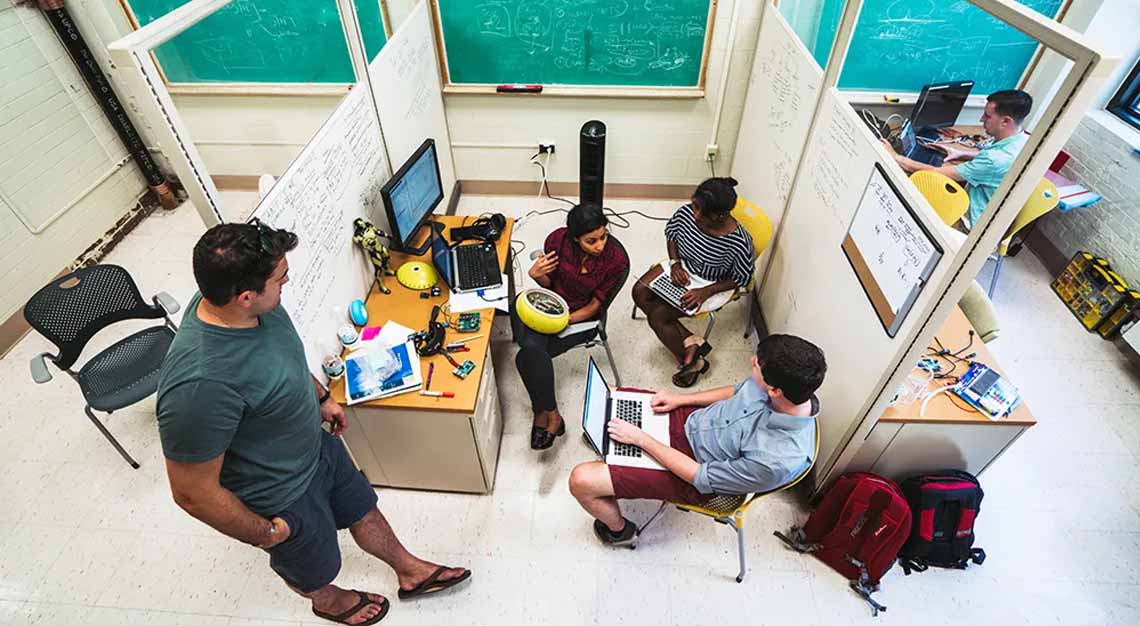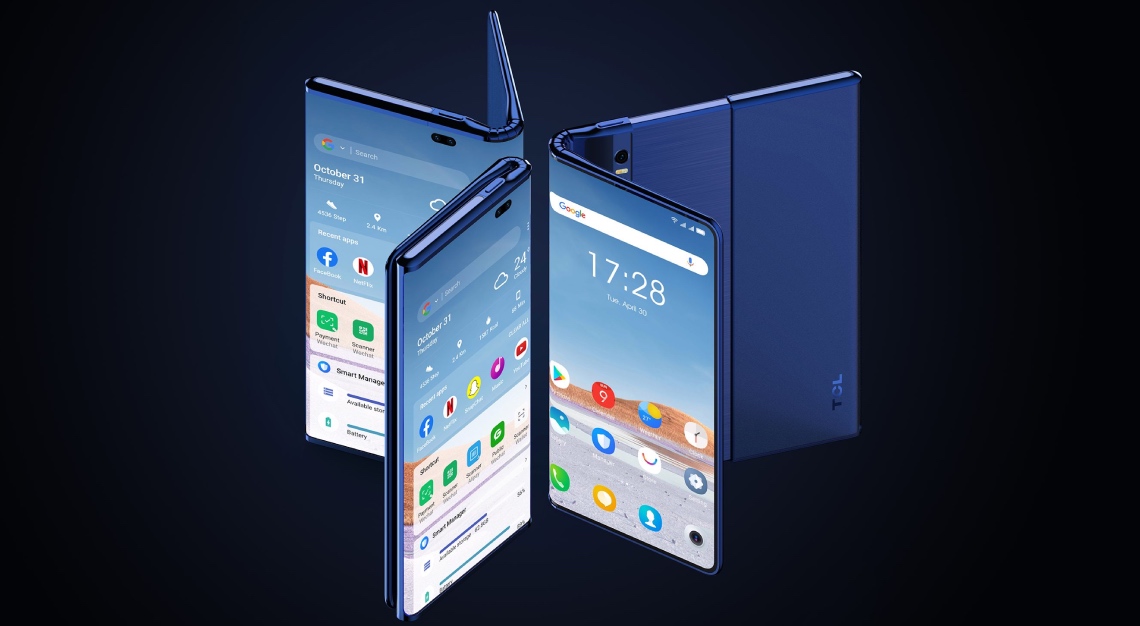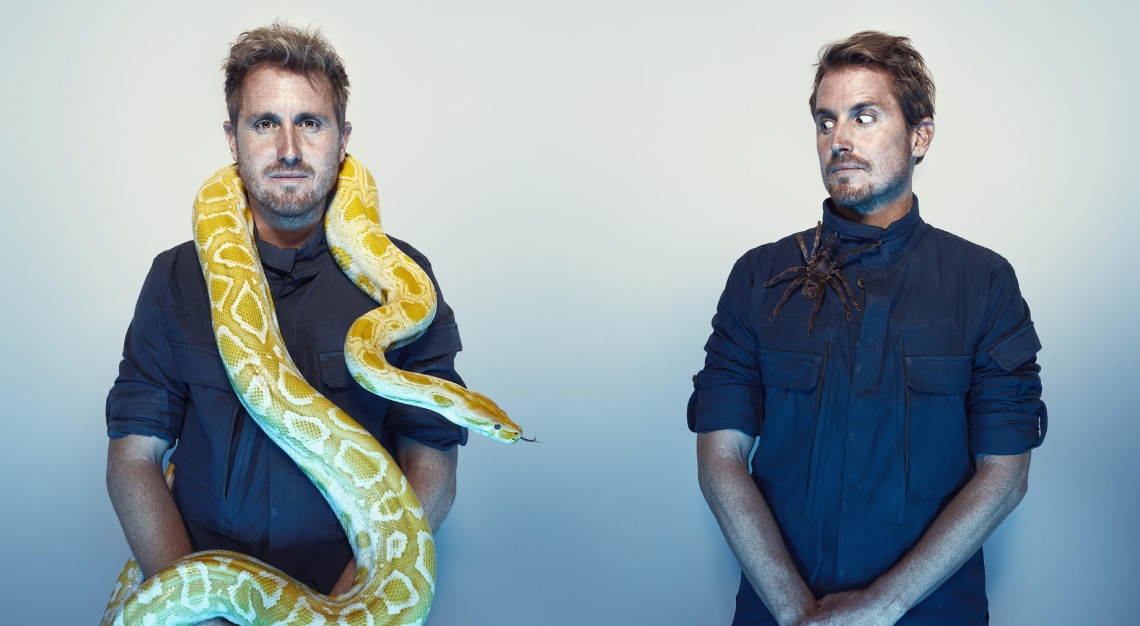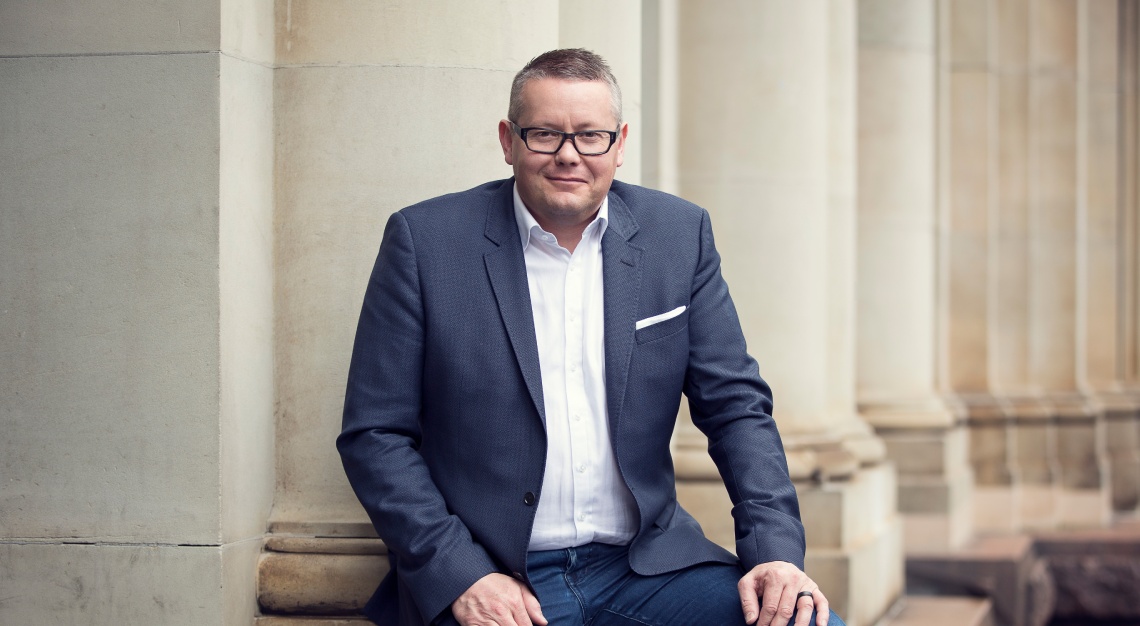Navier founder Sampriti Bhattacharyya left India in the hopes of using technology to solve the world’s “hard problems.” She’s off to a good start.
Sampriti Bhattacharyya broke free of the traditional gender constraints in her native India to become the founder and CEO of a pioneering in the U.S. But ironically, when we connect via Zoom, she’s back in the confines of her teenage bedroom in Kolkata for the first time in seven years. She points out the relics of her past that led her to train as an aerospace engineer in the States: a copy of Stephen Hawking’s A Brief History of Time (which further expanded her interest in the universe), the hulking Compaq computer on which she first googled “American internship,” and… a poster of a ’90s boy band. “The only thing I knew about America was NASA and the Backstreet Boys,” she says with a laugh.
The 36-year-old Bhattacharyya has been defying the odds from the beginning. She attended a small local college in Kolkata, not one of India’s prestige academic pipelines, and says people never thought of her as particularly smart. “The best that was expected out of me,” she recalls, “was maybe to be a housewife or work a low-key job.” But Bhattacharyya was always fascinated by space and curious about ocean exploration, taking astrophysics and cosmology classes as a “hobby.” She also dove into robotics projects.
Such single-mindedness can be a bit isolating, she admits, but it also “has its pluses”: It drove her to apply for no fewer than 540 internships on that Compaq. “Maybe if I sent 200 emails, then I would not have made it to the U.S.,” she muses. After receiving a total of four responses, she eventually scored a coveted summer internship at Fermilab, America’s particle physics and accelerator laboratory. At age 20, Bhattacharyya boarded a plane for the first time and arrived in Chicago with US$200 in her pocket.
She soon fell in love with machines and coding—specifically, how technology could help solve what she calls the world’s hard problems. That notion would become her modus operandi and the crux of her subsequent start-ups. Following her Fermi gig and while earning a master of science at the Ohio State University, Bhattacharyya landed an internship working on autonomous aircraft at NASA’s Ames Research Centre. NASA is where she also first learnt about the youthful entrepreneurs of Silicon Valley. “I saw Mark Zuckerberg, and I was blown away by the fact that somebody young could be a CEO,” she says. “That planted the idaea in my head about starting a company.”

First, she armed herself with more education, entering the PhD programme in mechanical engineering at MIT. In 2015, at the age of 28 and two years before earning her doctorate as a roboticist, she launched Hydroswarm. The company, which produced underwater drones to map the ocean floor, ultimately folded, but Bhattacharyya’s goal of creating a fleet of autonomous vessels remained. Her ability to persevere despite, by her own count, “many failures,” is partly inspired by Amazon’s billionaire founder. “Jeff Bezos says, ‘Be stubborn on vision, but flexible on details,’ ” she says. “I did that when Hydroswarm didn’t pan out.”
Bhattacharyya pivoted, building an operating system to modernise existing boats and, she hoped, transform water-borne transport with self-piloting fleets. The pandemic threw a wrench into that plan, as it proved impossible to get access to vessels, let alone refit them. The entrepreneur in her, though, was convinced that the electric revolution could expand from land to sea. Computing was getting cheaper, sensors were becoming more advanced, and scalable manufacturing was now a real possibility. Instead of thinking smaller, she went bigger: “It became clear the answer was not retrofitting,” she says. “It was imagining the next-generation vessels from the ground up.”
In 2020, Bhattacharyya tapped fellow MIT-trained engineer Reo Baird to help launch Navier, in the hope of creating a cleaner, more efficient way to travel on the waves and, in the process, alleviating congestion on the roads. The duo established a core team of seven industry experts by selling them the dream. Bhattacharyya recruited hydrofoil specialist Paul Bieker as the lead naval architect. “I called him up and said, ‘I know you built US$40 million yachts for America’s Cup, but if we scale this technology, it will change the way people move on the waterways,’ ” she says. When engineer Kenneth Jensen, who previously worked at Google and Uber, initially rebuffed her overtures, Bhattacharyya told him, “This thing has to exist.” He is now Navier’s chief technology officer. Her persistence also saw the start-up draw US$10 million in seed funding from the likes of Google cofounder Sergey Brin, Android cofounder Rich Miner, and other venture capitalists.
Working out of its San Francisco headquarters, Navier designed a 9 metres, eight-passenger electric foiling yacht (the N30) that progressed from sketch to full-scale, finished boat in 11 months. Three months later, a second vessel was complete. “What amazed me was that they worked in the first sea trial,” Bhattacharyya says.
“The best that was expected out of me,” she recalls, “was maybe to be a housewife or work a low-key job.”
The N30 glides four feet above the water on three carbon foils that boost speed and efficiency while minimising wake and drag. The foil concept has been around since the early 19th century, but Navier’s proprietary operating system sets the N30 apart. The vessel’s sensors feed information about wave conditions to software that then adjusts the foils to ensure a smooth ride. (We tested it, and it was downright peaceful.) The tech array even includes autodocking, or “one-click docking.” The boat is also equipped with two 90 kW electric motors that allow it to hit 35 knots at full tilt and cover 139 kilometres at 22 knots. Thanks to the foils and the diminished drag, the zero-emissions cruiser, Navier claims, is 10 times more efficient than traditional gas-powered boats. “It is the most advanced electric marine vessel for sure,” Bhattacharyya says.
The N30 will be available in three configurations: Open (US$375,000), Hardtop (US$450,000), and Cabin (US$550,000). The company expects to deliver between 30 and 50 crafts by the end of next year, with the electromechanical R&D and assembly done in Alameda, Calif. These personal vessels will be a great way to “fine-tune” the technology, Bhattacharyya says, but are only a small part of Navier’s master plan. She hopes to eventually roll out electric water taxis and barges to transport people and goods in coastal cities around the world.
“I think when we make that happen,” she says, a note of steely determination underlying her sunny optimism, “that would really be the testament to my success.”
This story was first published on Robb Report USA





